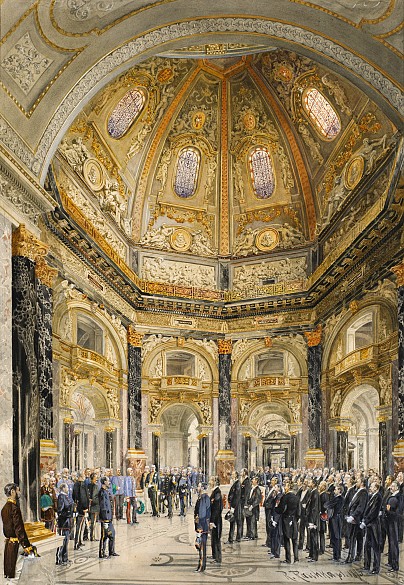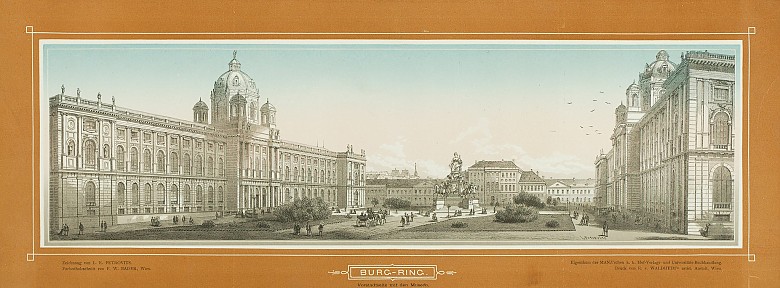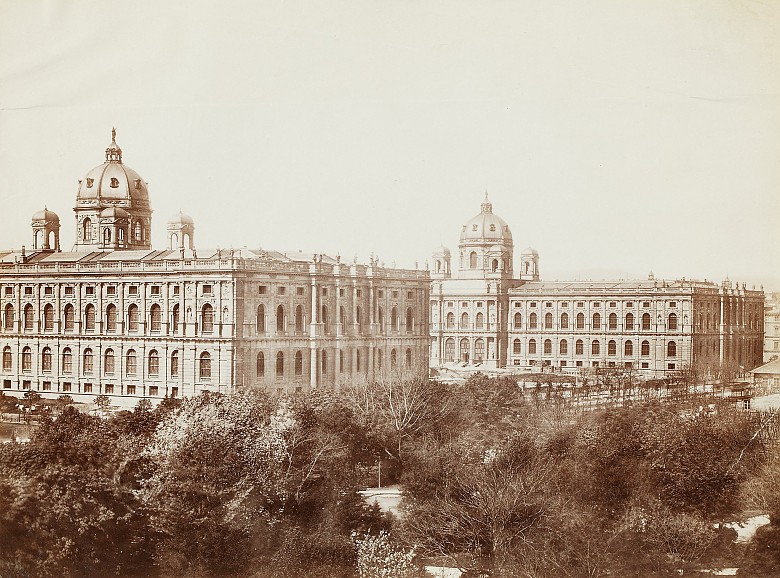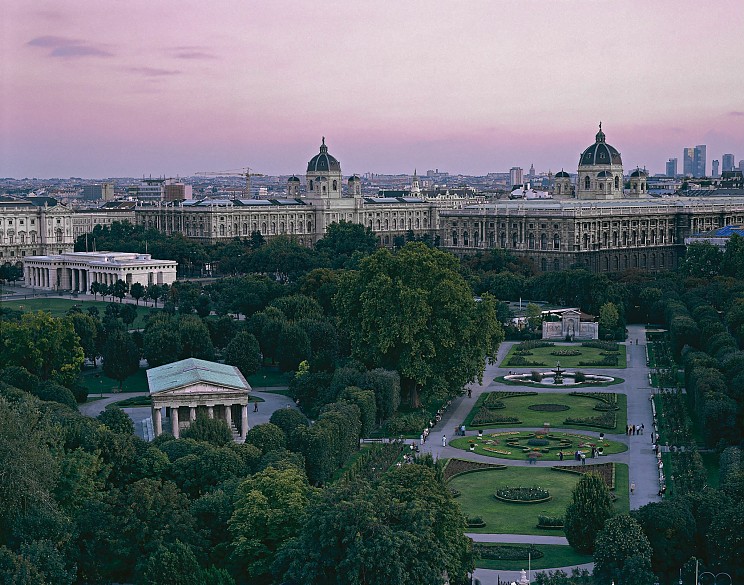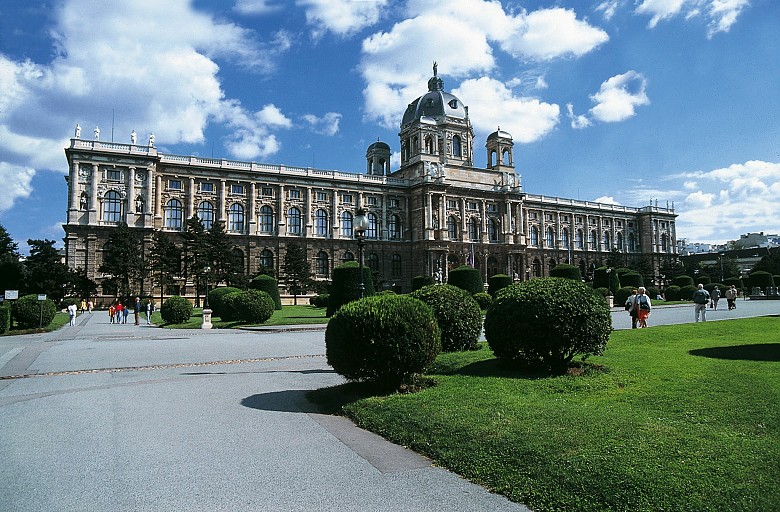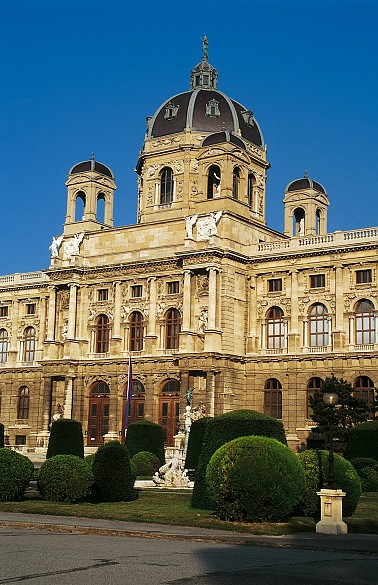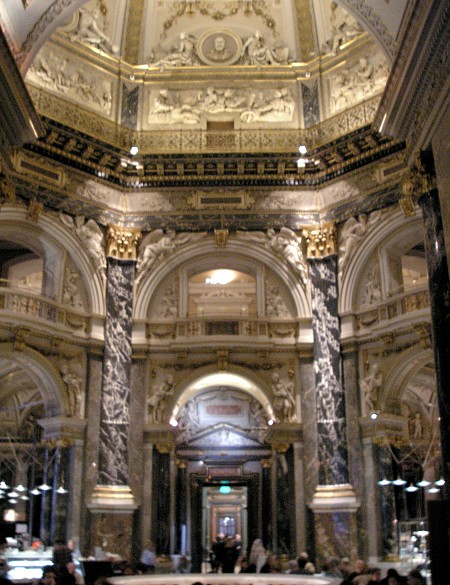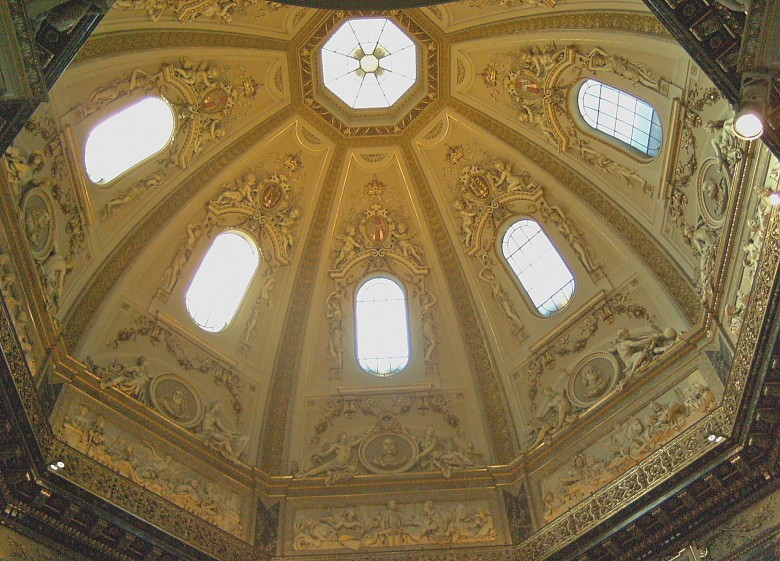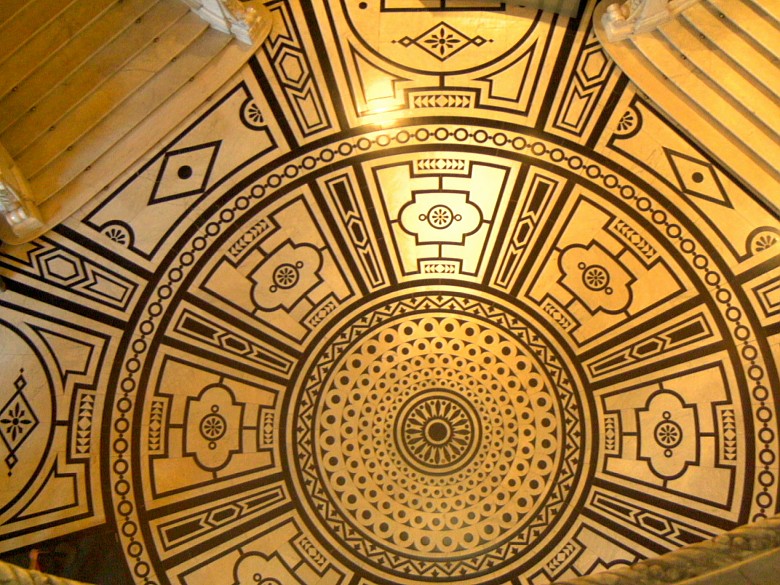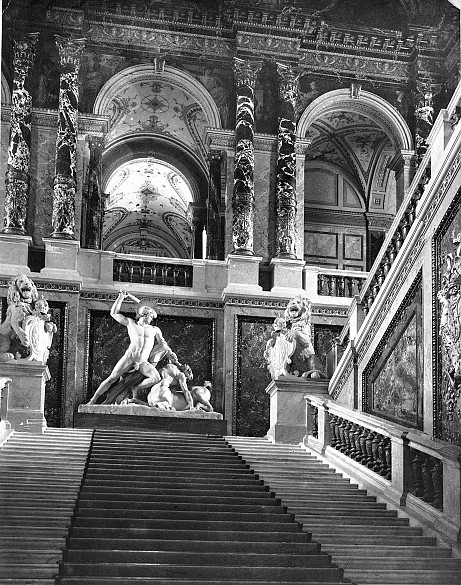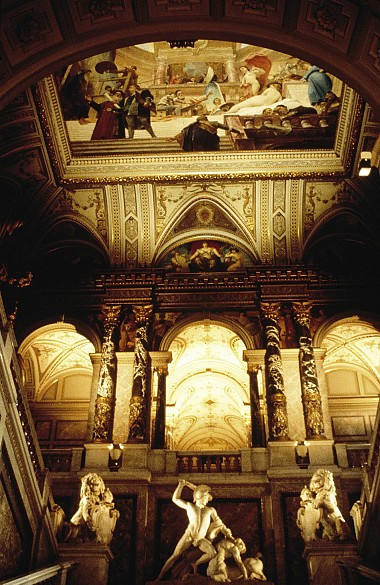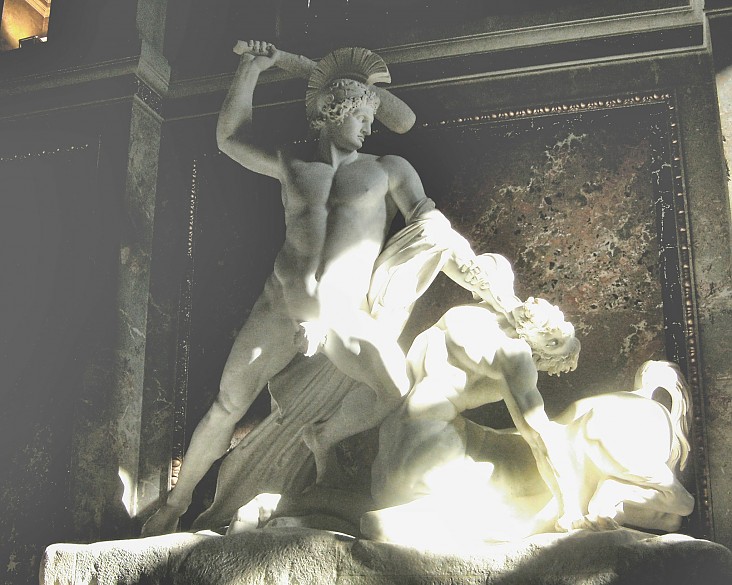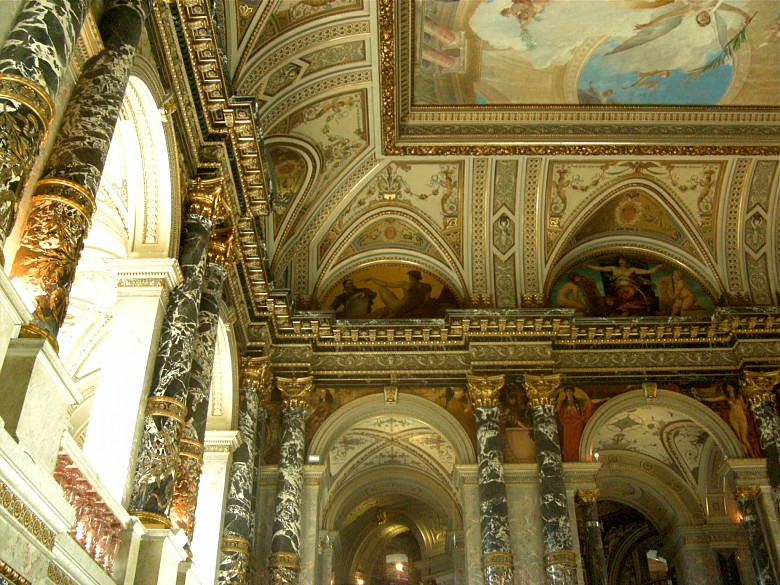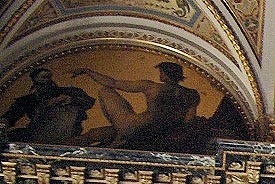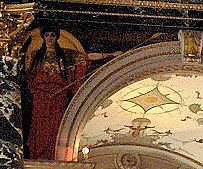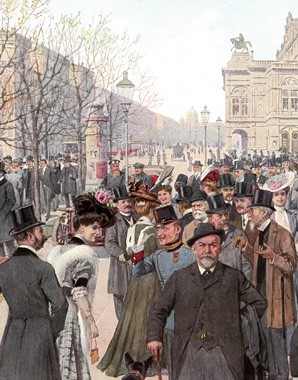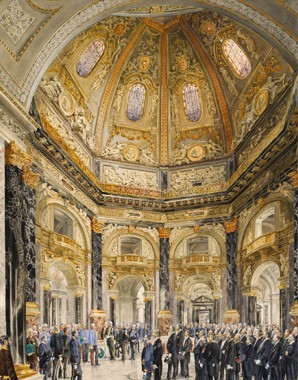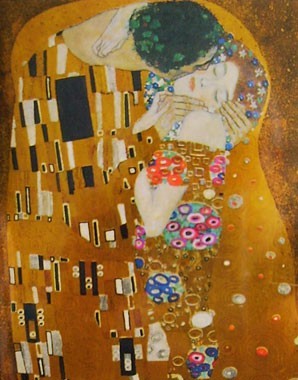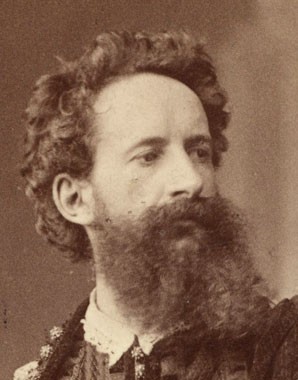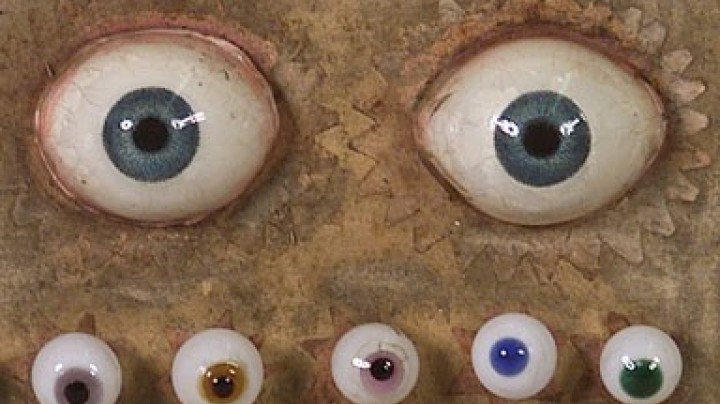The palaces of art and science
The Emperor commissioned two monumental museums in the immediate vicinity of the palace, one dedicated to the arts – the Kunsthistorisches Museum – and the other to the natural sciences, the Naturhistorisches Museum. However, they are first and foremost monuments to the collecting activities of generations of Habsburgs and only secondarily buildings for art and science.
Report in the Neue Freie Presse, 18 October 1891, on the opening of the Kunsthistorisches Museum the previous day.That must have been an extraordinarily difficult task; I am always delighted when I see something of yours.
On 17 October 1891 Emperor Franz Joseph opened the new Kunsthistorisches Museum. The imperial carriage drew up punctually at 11 o’clock sharp. For two and a half hours the Emperor viewed the collections conscientiously and thoroughly. Afterwards the artists, industrialists and foremen who had collaborated on the building were presented. Franz Joseph expressed his satisfaction with diplomatic reserve: ‘Everything has turned out very well – the building is as beautiful as the arrangement is practical. Only now can the objects be seen to their full advantage’.
However, before this stage was reached and the overflowing imperial collections which had hitherto been kept in unsuitable conditions in the Hofburg had been installed in the appropriate setting, much time had passed. The construction of the two Court Museums had taken more than ten years and cost enormous sums of money. Franz Joseph had wanted new buildings to house the dynastic collections right from the time the Ringstrasse was being planned. In 1864 the decision was taken to build a museum of art and a natural history museum facing the Hofburg across the boulevard. Work on the two almost identical domed structures designed in the Italian Renaissance style began in 1871. By 1881 the external shell of the two museums had been completed.
In keeping with Historicist notions, the magnificent interiors were intended to unite with the architecture to form a Gesamtkunstwerk. The decoration of the Kunsthistorisches Museum was not completed until 1891. Hans Makart had been the original choice for the ceiling frescos in the stairwell. After his death Gustav Klimt together with his ‘artists’ company’ – his brother Ernst and Franz Matsch – took over the decoration of the spandrel images. The three young artists received the commission as the Emperor was so pleased with the frescos they had recently completed in the Burgtheater.
